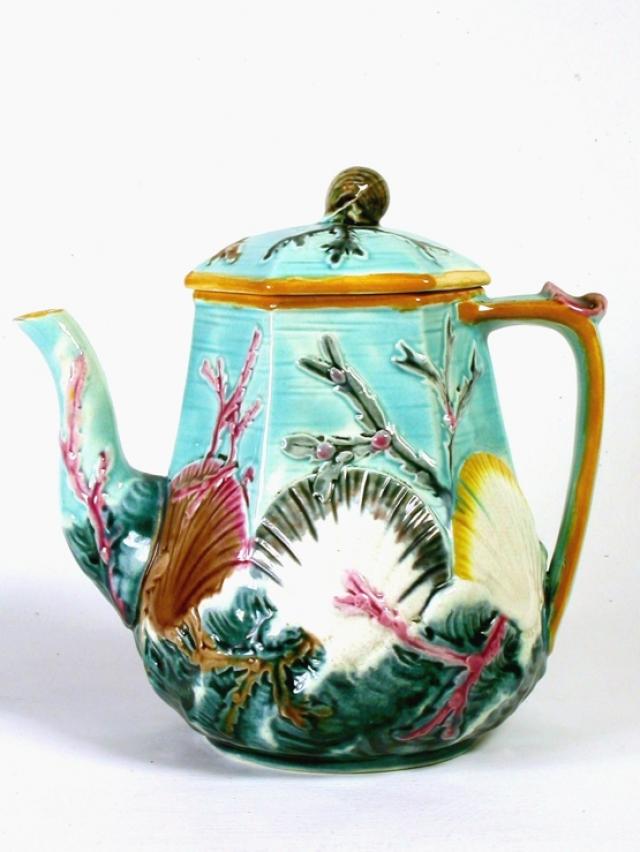Wedgwood and Nature: Ocean Teapot and Lid in Queen’s Ware
In the later decades of the 19th century the Victorians were captivated by naturalism. The establishment of botanical gardens, such as those at Kew, combined with an expanding general knowledge of flora and fauna as a result of investigative expeditions by collectors and specialists alike. Fascination and growing understanding led to a market demand for naturalistic forms, decorative designs and motifs.
Majolica ware, which could be cast and moulded into various shapes, met the need for these exotic forms. These were then decorated with the colourful glazes that so greatly appealed to our Victorian forebears. Majolica offered tremendous scope to the designer and artist alike, and almost every class of ware from garden furniture to jardinières, from cheese dishes to teawares, were produced in this body. Majolica’s versatility meant that it could meet the needs of contemporary taste and fashion so proved to be a very popular success.
The light coloured background and shell motifs featured on this majolica teapot were introduced after a visit by Wedgwood’s London showroom manager, Charles Bachhoffner, to the 1878 Paris exhibition. He advised the factory that new shapes and designs of naturalistic form were both much exhibited and much sought after. Wedgwood responded to this request with a wide range of wares featuring fruits, flowers and shells, often in a Japanese style, set against a pale or white background.
These ranges were a deliberate attempt to exploit the popular craze for Japonaiserie that was sweeping across Europe at this time. This unusual teapot would have satisfied many of the aspects of contemporary fashion and, due to reasonable pricing, would have been available to most markets both at home and overseas.
